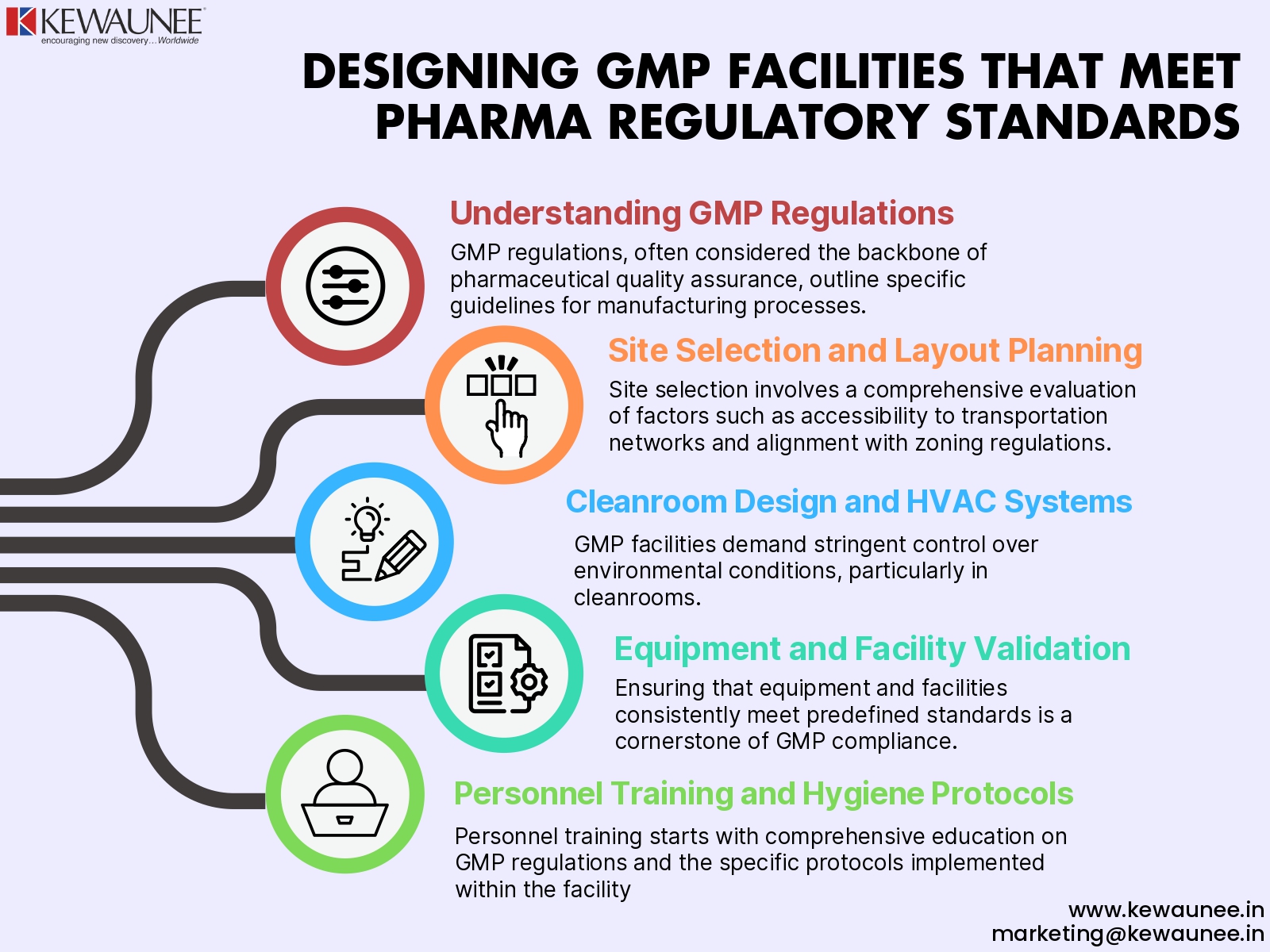Designing GMP Facilities that Meet Pharma Regulatory Standards
In the intricate landscape of pharmaceutical manufacturing, the design of Good Manufacturing Practice (GMP) facilities stands as a linchpin for success. The process involves meticulous planning and execution to ensure compliance with stringent regulatory standards.
These blueprints for success not only dictate the physical layout of the facility but also encompass a comprehensive strategy to ensure compliance, efficiency, and safety. In this extensive exploration, we will delve into the key considerations and strategies involved in designing GMP facilities that seamlessly align with pharmaceutical regulatory standards.
1. Understanding GMP Regulations
Designing GMP facilities necessitates a profound understanding of the regulatory landscape. GMP regulations, often considered the backbone of pharmaceutical quality assurance, outline specific guidelines for manufacturing processes. A robust understanding of these regulations lays the foundation for successful facility design, ensuring that every aspect aligns with the regulatory expectations.
GMP regulations cover critical aspects like documentation, quality control, cleanliness, and personnel training. Collaborative efforts between regulatory experts and design teams are essential to translating these regulations into actionable design elements.
2. Site Selection and Layout Planning
The location and layout of a GMP facility play pivotal roles in its overall success. Site selection involves a comprehensive evaluation of factors such as accessibility to transportation networks and alignment with zoning regulations. Layout planning ensures workflow optimization, segregation of processes, and adherence to cleanroom classifications.
Factors like proximity to suppliers, transportation infrastructure, and zoning regulations are carefully considered during site selection. The layout planning involves meticulous considerations to prevent cross-contamination, ensuring each step in the production process has its dedicated space.
3. Cleanroom Design and HVAC Systems
GMP facilities demand stringent control over environmental conditions, particularly in cleanrooms. The design of cleanrooms becomes a critical component in this pursuit. Cleanroom design involves categorizing areas based on cleanliness requirements, known as cleanroom classifications. The implementation of advanced HVAC systems ensures precise control over air quality, crucial for preventing contamination.
Temperature and humidity control are meticulously regulated to create an environment conducive to pharmaceutical production, adhering to GMP standards.
4. Equipment and Facility Validation
Ensuring that equipment and facilities consistently meet predefined standards is a cornerstone of GMP compliance. Validation processes begin with the selection of equipment that meets GMP standards. Rigorous testing and qualification ensure that each piece of equipment functions within specified parameters.
Ongoing validation involves regular assessments and documentation to guarantee continued compliance and reliability throughout the facility’s lifecycle.
5. Personnel Training and Hygiene Protocols
The human element is a critical factor in maintaining GMP standards. Personnel training starts with comprehensive education on GMP regulations and the specific protocols implemented within the facility. Continuous training programs ensure that employees stay updated on industry best practices and evolving regulatory requirements.
Hygiene protocols, including proper gowning and cleanliness practices, are emphasized to prevent contamination and uphold the integrity of pharmaceutical production.
Summary
Designing GMP facilities that meet pharmaceutical regulatory standards is a complex yet indispensable endeavor. Understanding GMP regulations, strategic site selection, meticulous cleanroom design, thorough equipment validation, and comprehensive personnel training collectively form the blueprint for success.
These elements, when carefully integrated into the facility design process, not only ensure regulatory compliance but also contribute to the production of high-quality and safe pharmaceutical products. The success of GMP facility design lies in the synthesis of regulatory knowledge, engineering expertise, and a commitment to excellence in pharmaceutical manufacturing.
Every aspect of the design process plays a crucial role in achieving a harmonious balance between regulatory adherence and operational efficiency, ultimately defining the success of GMP facilities in the pharmaceutical landscape.
Comments are closed.











